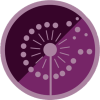Resource Highlight: How to Tell a More Effective Story

Communication is critical for connecting with your core audience, engaging with new audiences, and generating awareness and engagement on key issues. Katie Navin, Executive Director of the Colorado Alliance for Environmental Education, shares some key takeaways from "How to Tell a More Effective Story About Environmental Education: A Framing Guide for Advocates, Educators, Program Leaders, and Other Communicators," including the role communication plays in moving advocacy efforts forward successfully.
*****
NAAEE: This resource was created through a partnership between the Colorado Alliance for Environmental Education, Environmental Education of New Mexico, and the FrameWorks Institute. Can you talk about how you all came together to develop this resource?
Katie Navin: The Colorado Alliance for Environmental Education has been working on the Colorado Collective Outcomes Project since 2017, with support from the Pisces Foundation. Our goal is to build a framework for collective evaluation in environmental education in Colorado. We know that part of evaluation is sharing your results and using those results to both make decisions and improve your programming. Evaluation can also be a powerful way to tell your story and show the impact you're having as an environmental education organization to build public support for your programs.
As part of that evaluation project, we wanted to build in some tools and resources for sharing the results of evaluation. I had attended a webinar that included someone from the FrameWorks Institute as a speaker and became fascinated by their work. [The FrameWorks Institute] is a nonprofit that does a significant amount of research into cultural models, how they affect communication, and how communication can make social change. So, when you're asking, “how do we really move the needle,” they're already working on a lot of social issues and they had done some work in STEM education.
I saw that many of the communication tools and the recommendations the FrameWorks Institute made for STEM also seemed applicable to environmental education (EE). I was interested in consulting with them to build tools and resources that would be applicable no matter where you are talking about EE, not just in Colorado. They focus mainly on American cultural models, so this tool could be applicable anywhere in the country.
We were heading right into the pandemic and sent a request to the affiliate network Executive Director Group. We asked if anyone wanted to collaborate to help shape and build the communication resource and then participate in coaching with the FrameWorks Institute on how to use it. Environmental Education of New Mexico said, "Yes, we would love to participate." So they, along with CAEE, contributed the background communication materials that the FrameWorks Institute used to build the resource.
NAAEE: This resource is very much rooted in encouraging people to find and use evidence and to make effective arguments. Why is the storytelling lens important to add to craft effective messaging?
Katie Navin: I don't know if I would call it storytelling. [The FrameWorks Institute] looked at what cultural models throw up roadblocks when we're talking about American education. What are the things that we don't know people are thinking that are getting in the way, and how do we navigate around those to tell a different story? I'll give an example:
One of the American cultural models when thinking about education is that—and not everybody thinks this—the farther away you get from the classroom, the less important something is. And when you think about environmental education, it is often outside of the classroom, for example, on field trips, in the schoolyard, on a backpacking trip. EE takes place in all kinds of settings. And so, how do we frame our narrative so that people don't revert to thinking about [EE] as something extra rather than something that's integral? [The FrameWorks Institute] thinks about ways to tell that story or frame that narrative, to redirect how people think about EE. They have research that provides tips and clues on how to navigate some of these conversations.
NAAEE: How would you recommend someone start applying the tools in the guide? What recommendations do you have for implementing and thinking about reframing the language that we use?
Katie Navin: That's a great question because there are no silver bullets, and communication is different depending on who you're talking to while you're talking about [EE]. These communication tools don’t necessarily instruct, "say this now." And I think these tools take practice. If you read the guide you'll pick up some things. What really helped me was that we received some coaching around using the guide, which changed the way that I was thinking about it. Having conversations about it really helped. So I would say, reading is a great first step.
As a second step, watch some of the webinars that we've done. Hearing how someone else has used it is really helpful. We've done a couple of [webinars] that I'm happy to share.
Third, I would say just have conversations about [the guide]. Have a team of folks discuss, "Okay, what does this tool look like in our communications?" The more you talk about it, the easier it is to use. There's a lot of information in the framing guide. If you're able to pull out the pieces that are most important to you, I think that's super helpful. I printed it out and keep a copy of it next to my desk that I refer to when I'm writing something. It includes before and after examples for some of the tools, so I'll flip through those and see which one is closest to what I'm trying to say and tweak from there. That's been really helpful.
NAAEE: Why is advocacy important to the overall environmental education story?
Katie Navin: Well, it's hugely important in terms of thinking about how we move the needle on a large scale. You know, one of the cultural models that [the FrameWorks Institute] pulls out in the guide is this idea around individualism in American culture. We tend to blame individuals for things rather than thinking about systems. So, when a teacher doesn't engage in environmental education, the general public’s brains first go to, “well, the teacher doesn't like that,” “they don't want to do that,” “that's for the kids who like science,” or “that's for the kids who like the outdoors,” rather than thinking about it like, "oh, maybe they're not doing it because they don't have a system set up to do it,” “they don't have open space next to their school,” or “they don't have the professional employment and training they need to do it."
What the FrameWorks Institute really does is think about how we shift the lens from these individual things to be scalable systems-level solutions and understand that this is important not just for this kid or that kid or this person or that person, but it's important for all of us, whether we're participating in it or not. That translates really closely to advocacy in thinking about how we can set up the messaging around building public will for the need for environmental education. Then we can focus on advocacy to build those systems that actually help make it happen for all kids. Those are policy-level changes that need to happen, whether it's about bringing in funding or changing policies themselves.
NAAEE: What was the most fun part about being involved in creating this tool?
Katie Navin: I learned a lot about my own communications. All of the before and afters that you see in the guide came out of either Colorado or New Mexico. There were a lot of places where I thought, “Oh, I could be telling this story so much better and helping people to understand.” We eliminated a lot of places where we were maybe not doing a great job.
When we were talking with the FrameWorks Institute, I was using the language that environmental education helps people make choices about the environment. And they explained that that language will put people into a thinking-frame where they're like, "Oh you teach people how to recycle." And they will think about these little tiny choices that we make every day, rather than thinking systemically. Environmental education is doing much more than whatever individual choice pops up in their head. She helped me reframe that by using different language. I want to use language that conveys the power of what environmental education can do, not language that trivializes that. For me, that's the most fun.
Thank you, Katie, for showing us the "behind the scenes" of this resource and providing some insight on how to put the resource to work for any environmental education initiative!
Resources
- Download the Framing Guide and watch the webinar here
This interview has been edited by NAAEE for length and clarity.


